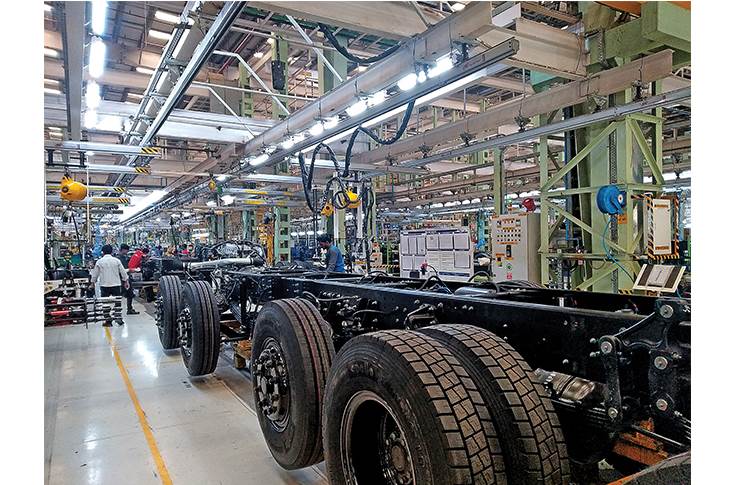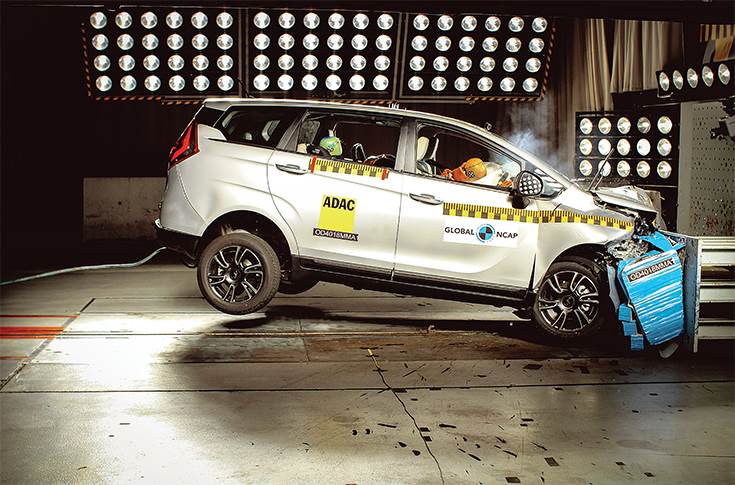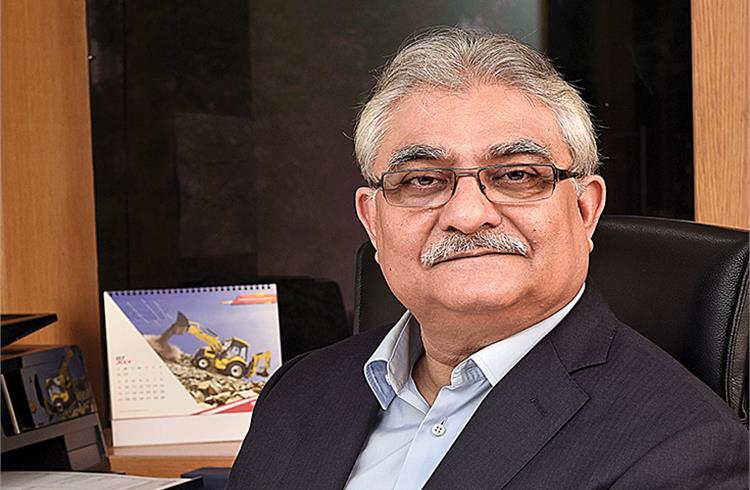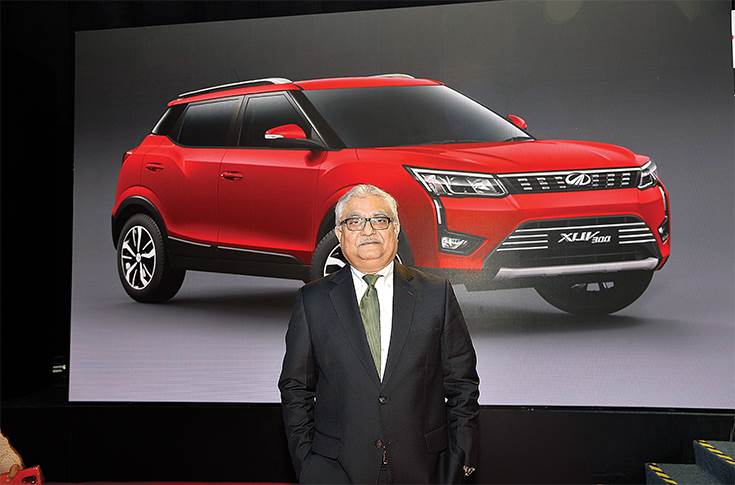Rajan Wadhera: ‘The BS IV to BS VI transition is going to be the biggest challenge that I have seen so far.’
The President of the Society of Indian Automobile Manufacturers (SIAM) speaks on axle load norms-related challenges, liquidity crunch, the recent Global NCAP crash test results involving Indian cars, current health of the domestic market, transition from BS IV to BS VI, IC engines to e-mobility in India, and lots more.
The promising Indian auto industry is having its share of challenges even as OEMs and suppliers take major strides to be at par with global players. The President of the Society of Indian Automobile Manufacturers (SIAM) speaks on axle load norms-related challenges, liquidity crunch, the recent Global NCAP crash test results involving Indian cars, current health of the domestic market, transition from BS IV to BS VI, IC engines to e-mobility in India, and lots more.
SIAM sales data for November 2018 shows a drop in six of the 12 sub-segments including the key ones — M&HCVs (-10.97%) and UVs (-10.18%). Is this only a month’s blip or is a slowdown seeping into the market? What are the factors at play?
I think the full effect of the change in axle-load norms, which has allowed fleet operators to get additional capacity, now looks to have settled down across the country from being only in a few pockets earlier. So, firstly, the axle-load norms have hampered the growth of heavy commercial vehicles (HCVs).
Secondly, easy availability of finance is not there as the NBFCs are unable to lend because of the ongoing financial issue. Also, there is no adequate compensation to the fleet owner due to the increase in fuel prices. So, all these three factors together have slowed down growth.
Moreover, the slowdown in the passenger vehicle segment is also impacting sale of trailers which are used for the movement of these vehicles across the country. Within the HCV segment, there is no perceptible growth from trailers and haulage trucks, with the only possibility coming in from tipper trucks as infrastructural spend continues to be there.

Revised axle-load norms for heavy commercial vehicles have impacted sales, what with HCV fleet owners opting for bigger vehicles and reducing the number of new purchases.
I would presume that growth in the next quarter (Q4 of FY2019) will be lower. However, there will be a rush of sale sometime around the second-half of FY2020 as people will look to replace their existing BS III vehicles, which are there in large numbers and will become two generations older than BS VI, in order to escape low resale value once BS VI norms kick in. Having said that, I am not sure if the upcoming elections would see any meaningful announcements that give the segment a blip, but, if we talk about UVs, their growth is purely sentiment-led and high diesel prices along with low availability of finances have dipped the sentiment.
Diwali has not been good for everyone across the industry, including consumer goods as well as the white goods segment, and somehow the sentiment has been not been positive.
The liquidity crunch has been a contributing factor to the slow growth. How much of an impact does the IL&FS issue have on financial availability and how long do you think it is going to persist?
A lot of things have happened including a change in regulations and also change of governors. If growth has to be the top priority, the government will need to ease the availability of funds for all kinds of businesses and transactions.
What are your thoughts on the performance of Indian OEMs in the recent Global NCAP results? Do they reflect the coming of age of homegrown OEMs in terms of quality and manufacturing?
The quality of Indian manufacturing has already reached world-class levels by and large, and now it is the question of customers wanting safer cars on the roads as driving speeds have gone up.
Mahindra & Mahindra, Tata Motors and other OEMs operating in the Indian market have started thinking of going beyond the minimum prescribed safety standards by the government which require crash testing at 56kph, while on the other hand, Global NCAP tests work on 64kph. Moreover, they also assess vehicles based upon parameters of additional safety features such as seatbelt reminders and knee airbags.
The entire push for safety is a consequence of the moral responsibility of Indian OEMs and I am glad that we have taken the lead to surpass the basic regulatory requirements and offer better products. It is a very heartening thing and everybody should be proud of it, irrespective of the rhetoric that why it wasn’t done before.
How would you see the performance compared to the previous results?
If we compare this to the previous results, I think there is massive improvement and this has been a giant step taken towards vehicle safety in India. We definitely should not have zero- to- two-star-rated cars. Three-, four- and five-star Global NCAP-rated cars are really good for us.
Having said that, I wouldn’t say that anything below three stars shouldn’t be allowed at all out there because there is a safety standard that the government has prescribed for India, keeping in mind its driving conditions and the affordability factor. We have to legally conform to that, but, if some company wants to produce over and above that and has the confidence of selling an even safer vehicle at a higher price point, there is no harm in that.

Recently launched Mahindra Marazzo MPV got a strong four-star rating.
With Tata Motors getting five stars and Mahindra getting four stars, I feel very proud being an Indian that two Indian companies have been able to accomplish this feat. It’s a journey and naturally, some of our upcoming products would definitely again target four and five stars and we will be in that range.
We are a little over a year away from seeing implementation of BS VI emission norms. How do you see the preparedness of the supplier ecosystem to help OEMs deliver BS VI-compliant products?
The BS VI norms, in a way, have been advanced by three months (by the Supreme Court ruling) as there has to be at least that much amount of time gap between start of production and retail as we will have to flush the pipeline completely out of BS IV vehicles. So, the component suppliers will need to supply at least three months in advance.
As it is, the time available for developing and validating BS VI is very short, where they need to be tested under a varied range of temperature and environmental conditions such as summers, winters, heavy traffic conditions, low-traffic conditions, sea level et al, particularly because the technology is such which requires testing under four to five different driving cycles.
We need to calibrate the injection of diesel under different driving and ambient conditions so that the fuel gets burnt completely and the particulate matter and NOx get trapped, while ensuring that diesel doesn’t mix with oil and there are no safety hazards in the vehicle. All of this needs time and a dedicated 2-3 years of resources on just one platform.
What I am trying to tell is that the preparation is hurried and, secondly, from a production perspective, there needs to be a vertical ramp up on existing lines at vendors to produce BS VI components. This in itself is a huge challenge and there needs to be very high level of discipline in terms of planning and execution at the supplier end to meet this deadline without getting into a chaos.
Rajan Wadhera: "The new announcement under FAME will be the North Star, or guiding star, for electric vehicle proliferation in the country."
The third constraint is the availability of BS VI fuel all over India, wherein if the government is unable to supply it all across the country at one go, it will further add to the entire chaos and I can see that this chaos is not easily manageable.
As the SIAM president, is there then a growing concern in your mind that the readiness is not on track?
Nobody has shared data as of yet on the level of readiness, but we do agree that it is a humongous task. Looking at the past, there is always a doubt that the fuel would be made available only in phases, beginning from the major 5-10 cities first. If I have to go by history, yes, I am worried.
There is also a growing view that the auto industry’s performance should be based on the retail sales. Do you agree with that? Is SIAM planning to shift from reporting wholesale numbers to retail numbers?
I don’t think so. Dealers buy (more) vehicles from OEMs in anticipation that when there is a festival coming they should not get stocked out. When that sale does not happen, then you start finding faults. I think there is a seamless integration between dealers and OEMs. A dealer is an extension of the company. We do not treat our dealers and us as different and neither should we want the customer or anybody.
If there is a seamless integration, it means we have to help protect his financials. He has to protect the numbers. If there is any inventory increase or decrease, it will get corrected over the time because reporting is on the first of every month. Wholesale is what is reported the world over and we have been used to reporting of the same. I would say it is a matter of time. At the end of the year, everything gets corrected. For whose judgement and benefit should we do this transaction change, I don’t understand.
There seems to be a growing view in FADA that the industry should report retail numbers.
Yes, but we don’t subscribe to that view. We feel wholesale is what should be reported.
In terms of innovation and technology, quality and costs, how do you rate the domestic component industry, primarily Indian players?
Indian OEMs are no different on these parameters. I would say there are no significant differences. I think newer OEMs have caught up and my appeal is to the Indian customers that they should look at the Indian OEMs with a different lens. The component manufacturers are also keeping pace with us because 90 percent of the parts are being sourced locally. Only thing there is that, they are still probably not as innovative and self-sufficient, so they do need to do technical licensing say with Korea, Japan and in lights with Taiwan, sometime with the UK and Germany. But I think they have improved very much compared to what and where they were 20 years ago.
It is very heartening to see that most of them now have dedicated R&D centres where they are trying to give you system solutions instead of designing a part to your drawings. I guess that this is an evolution and I am glad that the Indian OEMs and auto manufacturers have started focusing on R&D. But they need to increase the pace, there is no doubt about that. In all, there is a next wave of technology that is coming that they need to get prepared for – basically electric vehicle technology.
How do you see this transition from ICE vehicles to electric vehicles, mass scale electric mobility in India? What, according to you, would be the key building blocks that should be put in place?
I think we are all waiting for the new FAME announcement, which was to happen in the last MOVE Summit. I think that would, if you ask me, will be the North Star — the guiding star for electric vehicle proliferation in the country.
For any new technology to take shape you need incentivisation, mandating. Let us see on what all does the government gives incentive on and what all are they mandating. Subsequently, they will have to set up a policy framework to see that the incentive and the mandate are working. So it is a combination of incentivising, mandating and the policy framework set to ensure that what is being said is being done.
I am waiting for that policy to come, that will mandate certain things, which will incentivise the battery cost. Hence, depending on that, one can say whether, electric vehicle technology will stay or not. But personally I think EV technology is good for us because our energy security to that extent will be better or electric fuel, which is battery, which can be developed and set up manufacturing plants.
Oil producing companies in India, once they see the drop in oil consumption, will set up battery manufacturing units in the country. To that extent, the dependence on oil will go down and the energy security of the country will improve.
How challenging will the transition to BS VI be since there is no fool-proof strategy to dilute all BS IV stock by March 31, 2020?
Extremely challenging. I don’t think in my lifetime I am going to see complexity bigger than what I am anticipating in my mind next year — from planning to executing the transition from BS IV to BS VI is going to be the biggest challenge that I have seen so far.
Is there a ballpark figure with regard to the total investment being made by the automotive industry to meet the BS VI norms?
It all depends on what is the current level of engine technology and how many steps you have to travel to make your engine BS-VI compliant, and then depending on how many variants you have within a platform which you need to validate and test. The variables are far too many. I would assume anywhere from Rs 40-50 crore to Rs 100 crore per platform.
Because of this sudden shift in record time, will any of the investments made to meet BS IV remain unrecovered?
People who were planning to launch a BS IV model have stopped that and they will launch a BS VI model precisely for this reason. There will be some costs of BS IV investments which will not be recovered, unless for strategic reasons someone wants to do it. But for business reasons, it does not make financial sense to launch a BS IV model (now). I guess competitive pressures and numbers are also important factors here.
Though challenges are there in 2019, India has had its share of challenges this year. How do you plan to ring in the new year and what is your new year resolution?
I think SIAM's resolution has been carved out on a continuous basis about pushing and about building the nation responsibly and looking and accepting and dialoguing for newer technologies that are going to really help build the nation responsibly, whether it is the emission or safety technologies.
We are in discussion with the government to make sure that in the commercial vehicle areas, we don’t take steps which take away jobs. At SIAM, we are taking all the steps to build the nation responsibly. That is SIAM’s larger goal.
2019 is going to keep us occupied on how we go about executing BS VI. I am sure everybody is going to work on that and everybody including SIAM, companies and members.
I don’t think they are probably more bothered and more pained by anything other than executing the BS IV to BS VI transition. And hope that this transition, on which people have worked so hard, brings growth. All OEMs would have spent so much of money for the new regulation. I wish all OEMs to make a safe and reliable transition to BS VI.
(This interview was first featured in the December 15, 2018 'Anniversary' issue of Autocar Professional)
RELATED ARTICLES
BRANDED CONTENT: 'We aspire to be among the leading sensors and electro-mechanical products manufacturer'
P. Parthasarathy, Founder & Managing Director, Rotary Electronics Pvt Ltd shares the company's commitment and vision to ...
‘Big opportunity for startups lies in products in India’: Detlev Reicheneder
As electrification levels the playing field, the focus on tech and R&D to bring innovative products is the mantra for st...
'I hope my journey makes people say — I can do this too'
Ranjita Ravi, Co-founder of Orxa Energies — the maker of Mantis e-bikes — shares the challenges of building a startup an...





 23 Feb 2019
23 Feb 2019
 28223 Views
28223 Views







 Autocar Pro News Desk
Autocar Pro News Desk




